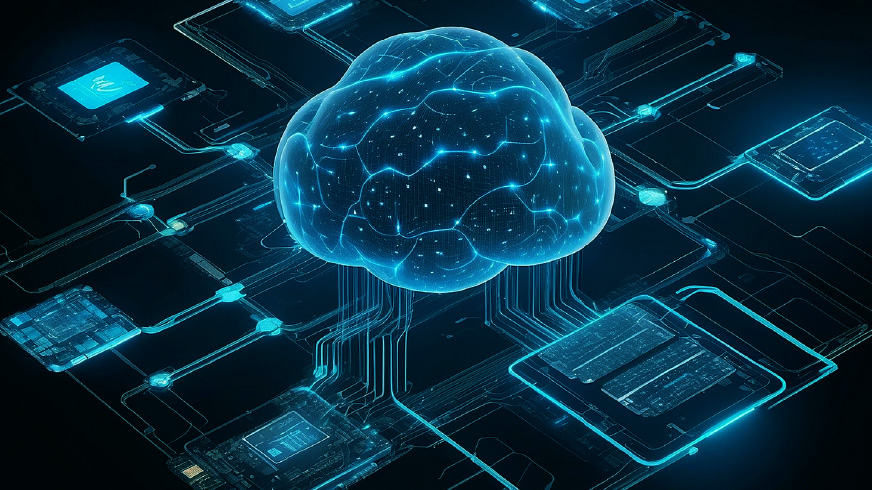Deep learning is not only advancing rapidly but also opening doors to unexplored domains and applications. The future promises significant transformations across various sectors, driven by innovations in deep learning technology. Here’s an exploration of some of these emerging areas and trends.
Deep Learning in Environmental Science
- Climate Modeling:
- Enhanced Predictions: Deep learning improves the accuracy of climate models by analyzing vast amounts of meteorological data. AI models predict climate patterns, extreme weather events, and long-term climate changes with greater precision.
- Real-Time Monitoring: AI-powered sensors and satellite imagery monitor environmental changes in real time. These tools track deforestation, ice melt, and pollution, providing valuable data for climate action and policy-making.
- Biodiversity Conservation:
- Species Identification: Deep learning models analyze images and audio recordings to identify and track wildlife species. This technology helps in monitoring endangered species and managing conservation efforts.
- Habitat Mapping: AI tools create detailed maps of natural habitats, assessing environmental changes and habitat loss. This information supports conservation strategies and environmental protection initiatives.
Deep Learning in Finance
- Algorithmic Trading:
- High-Frequency Trading: AI algorithms execute high-frequency trades based on market signals and trends. These systems capitalize on small price movements and optimize trading strategies for maximum returns.
- Predictive Analytics: AI models forecast market trends and investment opportunities by analyzing financial data, news, and social media. This enables more informed investment decisions and risk management.
- Credit Scoring and Fraud Detection:
- Enhanced Credit Scoring: AI models assess creditworthiness by analyzing a wide range of data, including transaction history and social behavior. This improves the accuracy of credit scoring and reduces default rates.
- Fraud Detection: AI systems detect fraudulent activities by analyzing transaction patterns and identifying anomalies. These tools prevent financial fraud and protect against cyber threats.
Deep Learning in Agriculture
- Precision Agriculture:
- Crop Monitoring: AI analyzes satellite and drone imagery to monitor crop health, detect pests, and assess soil conditions. This data-driven approach optimizes resource use and improves crop yields.
- Yield Prediction: Deep learning models predict crop yields based on weather conditions, soil quality, and historical data. This information helps farmers plan and manage their agricultural operations more effectively.
- Automated Farming Equipment:
- Robotic Harvesters: AI-driven robotic systems automate harvesting tasks, such as picking fruits and vegetables. These robots improve efficiency and reduce the need for manual labor in agriculture.
- Precision Irrigation: AI models optimize irrigation schedules and water usage based on crop needs and environmental conditions. This conserves water and enhances crop growth.
Deep Learning in Healthcare Research
- Genomics and Personalized Medicine:
- Genomic Analysis: AI models analyze genomic data to identify genetic variants associated with diseases. This enables personalized medicine approaches, tailoring treatments based on individual genetic profiles.
- Drug Repurposing: Deep learning accelerates drug discovery by identifying new uses for existing medications. This approach reduces development time and costs for finding effective treatments.
- Patient Monitoring and Care:
- Wearable Health Devices: AI-powered wearables monitor vital signs, activity levels, and other health metrics. These devices provide real-time insights into patient health and enable proactive management of chronic conditions.
- Virtual Health Assistants: AI-driven virtual assistants offer personalized health advice, schedule medical appointments, and provide support for managing chronic diseases. These tools enhance patient engagement and care.
Deep Learning in Legal and Compliance
- Legal Research and Document Analysis:
- Contract Review: AI systems analyze legal documents and contracts to identify key clauses, terms, and potential issues. This speeds up contract review processes and improves accuracy.
- Case Prediction: AI models predict case outcomes based on historical data and legal precedents. This helps legal professionals assess the likelihood of success and formulate effective legal strategies.
- Regulatory Compliance:
- Compliance Monitoring: AI tools monitor and analyze regulatory changes, ensuring organizations comply with industry standards and regulations. This reduces the risk of non-compliance and associated penalties.
- Fraud Detection in Compliance: AI systems detect fraudulent activities and compliance violations by analyzing transaction data and identifying suspicious patterns. This enhances the integrity of financial and legal systems.
Future Innovations and Directions
- AI and Neuromorphic Computing:
- Brain-Inspired Models: Neuromorphic computing aims to replicate the brain’s architecture and functionality. These models promise to enhance AI performance in tasks such as pattern recognition, decision-making, and sensory processing.
- Energy Efficiency: Neuromorphic chips offer improved energy efficiency compared to traditional computing architectures. This is crucial for deploying AI systems in energy-constrained environments, such as mobile devices and IoT sensors.
- AI and Augmented Reality (AR)/Virtual Reality (VR):
- Immersive Experiences: AI enhances AR and VR experiences by providing real-time object recognition, scene understanding, and interactive elements. These technologies are used in gaming, training simulations, and immersive storytelling.
- Virtual Assistants in AR/VR: AI-powered virtual assistants provide guidance and support within AR and VR environments. They assist users in navigating virtual spaces, accessing information, and interacting with virtual objects.
- AI in Space Exploration:
- Autonomous Spacecraft: AI enables autonomous navigation and operation of spacecraft, allowing them to perform tasks such as exploration, data collection, and mission planning without human intervention.
- Data Analysis from Space Missions: Deep learning models analyze data collected from space missions, including images, sensor readings, and telemetry. This accelerates the discovery of celestial objects and the understanding of space phenomena.
Conclusion
Deep learning is a transformative force with the potential to revolutionize numerous fields, from environmental science and finance to healthcare and legal compliance. As technology continues to advance, new applications and innovations will emerge, driving progress and creating opportunities for growth and improvement.
Embracing these advancements while addressing ethical considerations and promoting responsible development will be crucial for maximizing the benefits of deep learning. The journey of deep learning is an ongoing exploration, offering exciting possibilities and shaping the future of technology and society.



